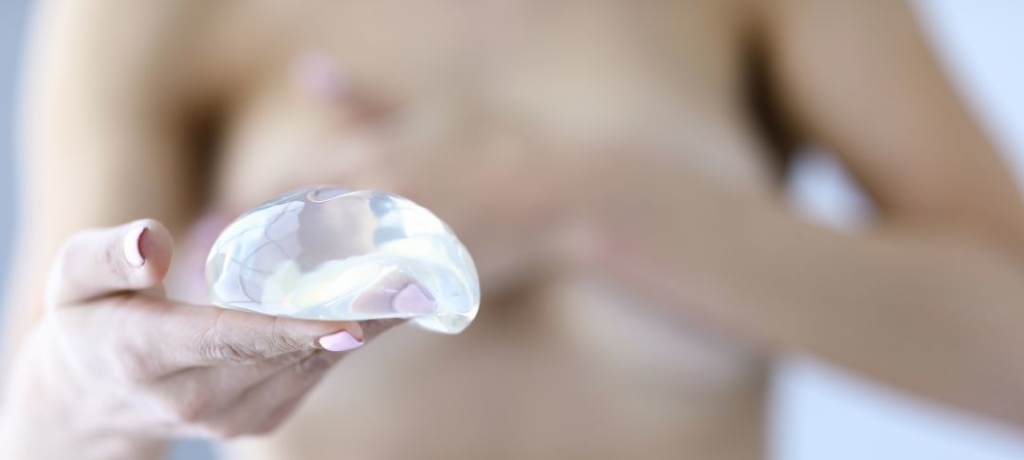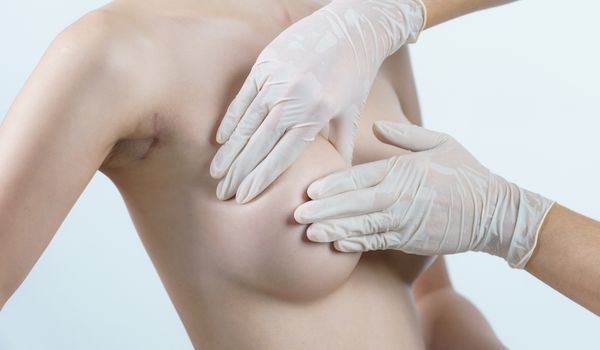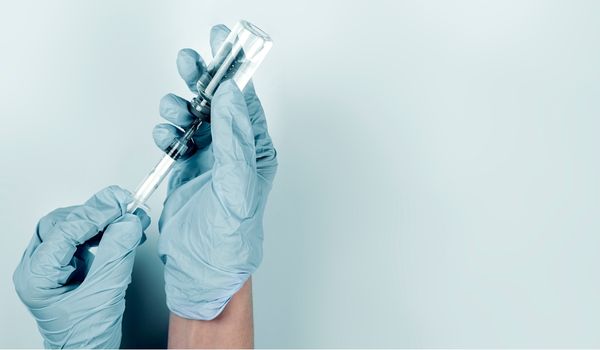
A Potential Complication of Breast Implant Surgery is Animation Deformity
Breast animation deformity is a breast-shape deformity that happens because of the excessive movement of breast implants during activities that engage the chest muscles.
It’s a potential complication after breast augmentation and reconstruction surgery with implants positioned under the chest muscles.
Implants inserted behind the chest muscles may move into an unnatural position when you perform activities that involve the use of these muscles. That causes the overlying skin and nipple/ areola complex to move too, which leads to a distorted and unsightly breast appearance known as breast animation deformity.
This article discusses how this complication happens, how to fix it, and whether it’s possible to avoid breast distortions after getting implants.
What Is Animation Deformity?
Breast animation deformity, or breast distortion, is a term used to describe the visible movement of breast implants when the chest muscle contracts. It’s a potential complication following under the muscle breast implant procedure.
The Pectoralis major is a thick, fan-shaped muscle in the upper chest. It’s one of the biggest chest muscles and lies underneath the breast tissue.
The contraction of the pectoralis muscle helps your body move, rotate, flex, and extend your arms.
Patients with this complication notice an unnatural change in the position of their implants and nipples when they engage or flex their Pectoralis major muscle. The implants return to their normal positioning once the muscle relaxes.
That’s why this post-breast augmentation complication can be more common for athletes, Yoga instructors, and women who work out.
What Causes Animation Deformity?
This condition is caused by the contraction of the pectoral muscles against breast implants.
During breast augmentation surgery, the implants are usually placed either under the chest muscle (submuscular) or above it (subglandular).
Breast implants placed over the muscle are covered with soft breast tissues that provide a cushioning effect. Moreover, when the implant is on top of the pectoralis muscle, it’s not directly affected by the muscle’s contraction since the muscle is not covering the implant.
At the same time, in the case of submuscular breast implants, the chest muscle separates the implant from the soft breast tissue. When the pectoral muscle contracts on top of the implant, the breast implant can shift in position. The overlying breast skin and nipple complex can also move and create a deformed breast appearance.
The contraction of the Pectoralis major muscle can cause the implant underneath it to move upwards and slightly outwards, leading to animation deformity.
What Are The Risk Factors Of Animation Deformity?
So far, the submuscular positioning of implants is the only factor that increases the risk of developing breast animation deformity after breast implant surgery.
Other factors such as age, body mass index (BMI), sport activities, implant size, and implant type did not increase the likelihood of developing breast distortion after getting breast implants.
However, it’s more likely to notice the movement in your breast implants while performing physical activities that cause your chest muscles to contract.
How Common Is Animation Deformity?
It is not uncommon after plastic breast surgery, especially breast augmentation surgery and breast reconstruction surgery with submuscular implants.
One study showed that more than 75% of patients reported a breast animation deformity following breast reconstruction surgery with subpectoral implants.
Another study found that 15%-17% of patients had moderate to severe animation deformity after submuscular breast augmentation surgery.
Many patients reported that breast distortion commonly happened while exercising or lifting weights.
How Is Animation Deformity Treated?
The correction of breast animation deformity depends on the severity of the distortion in the breast and the patient’s eligibility for revision surgery.
Animation deformity treatment options include:
1. Surgically repositioning implants
To fix breast animation deformity, surgeons usually perform breast revision surgery to reposition the submuscular implants to a subglandular position (above the muscle).
The surgeon performs another breast surgery to remove the implants from under the muscles and inserts the implants under the glandular tissue. As a result, the implant is covered with protective breast tissue and no longer moves that much when you flex your chest muscles.
However, breast revisions are complex procedures. They require experienced surgeons to operate on breast tissues that have already undergone significant trauma during the first surgery. They also require additional incisions that can cause more breast scarring.
2. Selective nerve ablation
Sometimes, surgeons avoid performing a second surgery to correct a breast animation deformity because of the patient’s health, age, breast tissue condition, and level of scarring.
The breast distortion following breast augmentation with submuscular implants can be treated by selective nerve ablation.
In selective nerve ablation, your surgeon will use electrodes to deliver electric currents to the medial and lateral nerves that innervate the Pectoralis major muscle.
The electric currents generate heat and damage the pectoral nerves. Hence, the chest muscles will contract less, which helps limit the movement of the implants underneath them. And the surgeon doesn’t need to reposition the breast implants.
Using this technique, surgeons have successfully corrected animation deformities while preserving the submuscular position of the implants.
3. Botox injections
Botox injections can also help manage breast animation deformity in women with subpectoral breast implants.
Botulinum toxin type A inhibits the release of neurotransmitters and can cause temporary muscle weakness or paralysis.
Injecting Botox into the pectoral muscle causes the muscle to relax and reduces the contraction. The temporary weakness of the Pectoralis major muscle prevents any obvious breast animation deformities.
Even though Botox injections are not permanent, they can prevent patients with submuscular breast implant deformity from returning to the operating room.
How to Avoid Animation Deformity?
The best way to avoid breast animation deformity is by placing the implants on top of the pectoral muscle rather than under it.
The subglandular positioning of breast implants doesn’t affect the pectoral muscles and provides the implants with natural breast tissue coverage.
However, this is not always ideal. Surgeons usually recommend under-the-muscle breast implants for women with minimal natural breast tissue. If the breast doesn’t have sufficient breast tissue, an implant will be more visible if placed above the muscle instead of under it.
What Are The Complications Of Animation Deformity?
Breast animation deformity can negatively affect the quality of life of patients following breast augmentation or reconstruction surgery.
Breast distortion can be very cosmetically unpleasant. Some patients confronted with this complication mention that breast animation deformity has negatively affected their relationships and caused them emotional and psychological distress.
However, this is not only a cosmetic problem but also a functional one. Patients with submuscular breast implant animation deformities can also experience pain, muscle twitching, and impaired shoulder function. In consequence, their upper body physical activity can become limited.
Before getting breast implants, discuss with your surgeon the breast implant position options. Carefully consider the pros and cons of above-the-muscle and under-the-muscle implants. Although above-the-muscle breast implants reduce the risk of breast animation deformity, they may not give you the breast shape you want.
Medical References about Animation Deformity after Plastic Surgery
- An overview of animation deformity in prosthetic breast reconstruction – PMC
- Animation Deformity in Postmastectomy Implant-Based Reconstruction – PMC
- Treatment of Breast Animation Deformity in Implant-Based Reconstruction with Selective Nerve Ablation
Further Reading Related to Animation Deformity
- Breast Revision Surgery Melbourne by Dr Carmen Munteanu FRACS (Plas)
- Breast Implants Revision Gallery
- Breast Implant Removal Sydney – Soliman Plastic Surgery
- Waterfall Breast Deformity – Causes And Solutions By Dr Jake Lim
- Can Your Breasts Grow Back After Breast Reduction Surgery?
- What Is Pocket Deformity? By Joe Gryskiewicz, MD, FACS



